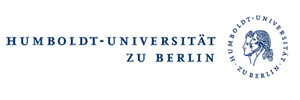Title: Images of the Female Character in Nigerian Christian Television Drama Serial: Lekan Asikhia’s The Gatekeepers in Perspective
Solomon Adedokun Edebor
Department of Languages and Literary Studies
Afe Babalola University, Ado-Ekiti, Ekiti State, Nigeria
Abstract
All over the world, controversies regarding the perception and relevance of women in society remain unabated. Prior research on Nigerian literature has largely focused on women’s depictions in written and oral literature, as well as films with little attention paid to Christian television drama serials. This paper, therefore, examines the portrayals of the female character in Nigerian Christian television drama serials to categorise female stereotypes that arise from such representations, even as it interrogates whether such representation reinforces socially constructed feminine notions. The study is significant because it extends the frontiers of knowledge by contributing to the existing body of scholarship on soap operas worldwide. Besides, its usefulness in the portrayal of women in Nigerian Christian television soap operas may provide the stimulus needed by producers of this genre to (re)examine their positions on the portrait of the female character offered to the Nigerian audience. Gerbner’s cultivation theory, Bandura’s social learning theory, and Carroll’s feminist film criticism were used as the theoretical framework, while Lekan Asikhia’s The Gatekeepers was purposively selected owing to how women are portrayed in it. Data from the serial were subjected to content analysis using the descriptive approach. The drama serial differently depicts eight signifiers of stereotypes of women. The persistent stereotypes are those that depict women as the tolerant wife who bears her husband’s promiscuity and assault; the stay-at-home wife; the adulterous wife who engages in sexual immorality due to financial incentives/sexual gratification; the nasty stepmother that hurts her stepchildren and co-wives; the horrible and intrusive mother-in-law; the nonchalant mother whose actions are characterised by inconsiderateness and avarice; the femme fatale that brings calamitous events upon her victims; and the career woman with failed relationships or marriages. The paper concludes that the depictions of the female character in Nigerian Christian television plays are largely infused with a wide range of socio-cultural stereotypes. Thus, socially constructed feminine notions are reinforced by producers of Nigerian Christian television drama serials.
Keywords:
Christian television drama serial, empowerment, oppression, patriarchy, stereotype, The Gatekeepers, women
How to Cite this Paper:
Solomon, A. E. (2023). Images of the Female Character in Nigerian Christian Television Drama Serial: Lekan Asikhia’s The Gatekeepers in Perspective. Atras Journal, 4(1), 67-90
References
Acholonu, C. O. (1995). Motherism: The Afrocentric alternative to feminism. Afa Publications.
Acholonu, C. (1988). Buchi Emecheta. Perspectives on Nigerian Literature 1700 to the Present. 2, 216-222.
Adedeji, J A. (1971). The church and the emergence of the Nigerian theatre: 1866 -1914. Journal of the Historical Society of Nigeria, 6(1), 25 – 45.
Adedeji, J. A. (1973). The church and the emergence of the Nigerian theatre: 1915 – 1945. Journal of the Historical Society of Nigeria, 8(4), 387 – 396.
Aderibigbe, I. (2013). Womanhood in African worldview and religion. The Power of Gender, the Gender of Power: Women’s Labor, Rights and Responsibilities in Africa. Africa World Press. 685- 702.
Adesina, F. (1998). Christian television plays as propaganda: a critical analysis of texts and Performance, (Unpublished doctoral dissertation). University of Ibadan.
Adewale, V. O. (2008). Beyond entertainment: Christian video films and evangelism in Nigeria. In F. Ogunleye (Ed.), Africa through the Eye of the Camera (pp. 238- 248), Academic Publishers.
Adu, O. (2008). The missing link: Women’s representation and participation in Nigeria’s electoral politics and their effect on Nigeria’s development, (Unpublished Master’s thesis). Haverford College.
Agoro, S. N. A. (1996). Theatre and the Church: The Study of Contemporary Drama and Theatre in Nigeria (1970- 1992), (Unpublished doctoral dissertation). University of
Ibadan. Aidoo, A. A. (1990). Interview by Adewale Maja Peace. Index on Censorship 19. Writer Scholar International.
Aje-Ori, A. (2010). The portrayal of mothers-in-law in Nigerian movies: The good, the bad & oh, so wicked. Film in African Literature Today, 28, 84-105.
Amaefule, A. E. (2021). Christian feminist theology and the church in Nigeria. 1-25. Available at https://www.researchgate.net/publication/349988437
Asikhia, L. (Producer). (2007). The gatekeepers. (Television serial). LADTEM.
Awe, B. (2002). Introduction. In B. Awe (Ed.). Nigerian Women: A Historical Perspective (pp. ix- xvi). Bookcraft.
Balogun, O. A. (2010). Proverbial oppression of women in Yoruba African culture: a philosophical overview. Thought and Practice: A Journal of the Philosophical Association of Kenya (PAK) New Series, 2(1), 21-36.
Bandura, A. (2011). Social cognitive theory and media production. Using the Media toAchieve Reproductive Health and Gender E quity (pp. 30– 38). Population Media Center.
Barker, K. (2011) Sex, soap, and social change: Theories underlying the Sabido methodology. Using the Media to Achieve Reproductive Health and Gender Equity (pp. 2-11). Population Media Center.
Carroll, N. (1990). The image of women in film: A defense of a paradigm. The Journal of Aesthetics and Art Criticism, 48(4), 349-360.
Carroll, N. (1996) Theorizing the moving image. Cambridge University Press.
Chari, T. (2008). Representation of women in selected Zimbabwean films and videos. In F. Ogunleye (Ed.), African through the Eye of the Video Camera (pp. 128-145). University of Chicago Press.
Chukwuma, H. (1989). Positivism and the female crisis: The novel of Buchi Emecheta. In H. C. Otokunefor & O. C. Nwodo (Eds.), Nigerian Female Writers: A Critical Perspective (pp. 2-18). Malthouse Press.
Dasylva, A. O. (2013). Politics of development: interrogating phallocentric space, negotiating the gender of modern Nigerian politics. In T. Falola (Ed.), The Power of Gender, the Gender of Power: Women’s Labor, Rights and Responsibilities in Africa (pp. 431- 448). Africa World Press.
Edebor, S. A. (2021). The portrait of the female character in selected Nigerian television soap operas: The example of sister sister and lekki wives.” KJLL, 2(2), 104- 121.
Edebor, S. A. (2010). From theatre to screen: A study of selected Nigerian Christian drama and home videos, (Unpublished Master’s Thesis). University of Ibadan.
Emecheta, B. (2012). Feminism with a small “f”! In T. Olaniyan & A. Quayson (Eds.), African literature: an anthology of criticism and theory (pp. 551-560). Blackwell Publishing.
Endong, F. P. C., & Edim E. O. (2015). Media (mis) representation of the Nigerian woman as a product of the society. International Journal of Gender and Women’s Studies, 3(1), 101-106.
Gerbner, G. et al. (2001). Growing up with television: Cultivation processes. In J. Bryant & D. Zillmann (Eds.) Media Effects: Advances in Theory and Research (2nd ed., pp. 1-40). Lawrence Eribaum Associates https://www.researchgate.net/publication/310842660.
Hondo, M. (1996). What is Cinema for Us? In I. Bakari & M. Cham (Eds.), African Experiences of Cinema (pp. 39-41). British Film Institute Publishing.
Idegu, V. O. (2011). Bad women, good men: re-reading the stereotyping of women in selected Nigerian home video movies, (Unpublished Master’s Thesis). Ahmadu Bello University.
Katrak, K. H. (1987). Womanhood and motherhood: Variations on a theme in selected novels ofBuchi Emecheta. Journal of Commonwealth Literature, 21(1), 159-170.
MacRae, S. (1999). The mature and older women of African film. In K. W. Harrow (Ed.), African Cinema: Post-Colonial and Feminist Readings (pp. 241-254), African WorlPress.
Moaddel, M. (1998). Religion and women: Islamic modernism versus fundamentalism. Journal for the Scientific Study of Religion, 37(1), 108-130.
Morgan, M. & Shanahan, J. (1997). Two decades of cultivation research: An appraisal and meta-analysis. In B. R. Burleson (Ed.), Communication Yearbook 20 (pp. 1-45). Sage.
Norris, P. (1998) Eve: A biography. New York University Press.
Ogunleye, F. (2003). Christian video film in Nigeria: dramatic sermons through the silver screen. In F. Ogunleye (Ed.), African Video Film Today (pp. 105-128). Academic Publishers.
Oha, O. (2002). Yoruba Christian video narrative and indigenous imaginations: dialogue and duelogue. Cahiers d’Etudes Africaines, 42(65), 121- 142.
Onwubiko, C. P. C. (2012). Empowerment of Nigerian women towards national development. Journal of Resourcefulness and Distinction, 2(1), 68- 78.
Osofisan, F. (2001). Literature and Pressures of Freedom: Essays, Speeches and Songs. Opon Ifa Readers.
Osondu-Oti, A., & Olominu, T. (2018). Breaking the glass ceiling for Nigerian women participation in politics: A gender mainstreaming approach. EPRA International Journal, 4(12), 173-181.
Osondu-Oti, A., & Omole, O. E. (2016). Examining the ‘success penalty’ in the marriage market for Nigerian women”. Journal of Educational and Social Research, 6(2), 19-26.
Owonibi, S. (2004). African literature and the re-construction of womanhood: A study of selected plays of Femi Osofisan. Mgbakoigba: Journal of African Studies, 3, 88-98.
Paul II, J. (1995). Letter of Pope John Paul II to Women. Available at https://www.vatican.va/content/john-paul-ii/en/letters/1995/documents/hf_jp-ii_let_29061995_women.html
The Holy Bible: New King James Version. 1982. Thomas Nelson, Inc. Ukah, A. F. –K. (2003). Advertising God: Nigerian Christian video-films and the power of consumer culture. Journal of Religion in Africa, 33(2), 203-231.

Copyright for all articles published in ATRAS belongs to the author. The authors also grant permission to the publisher to publish, reproduce, distribute, and transmit the articles. ATRAS publishes accepted papers under the Creative Commons Attribution-NonCommercial 4.0 International (CC BY-NC 4.0) License. Authors submitting papers for publication in ATRAS agree to apply the CC BY-NC 4.0 license to their work. For non-commercial purposes, anyone may copy, redistribute material, remix, transform, and construct material in any media or format, provided that the terms of the license are observed and the original source is properly cited.







































































